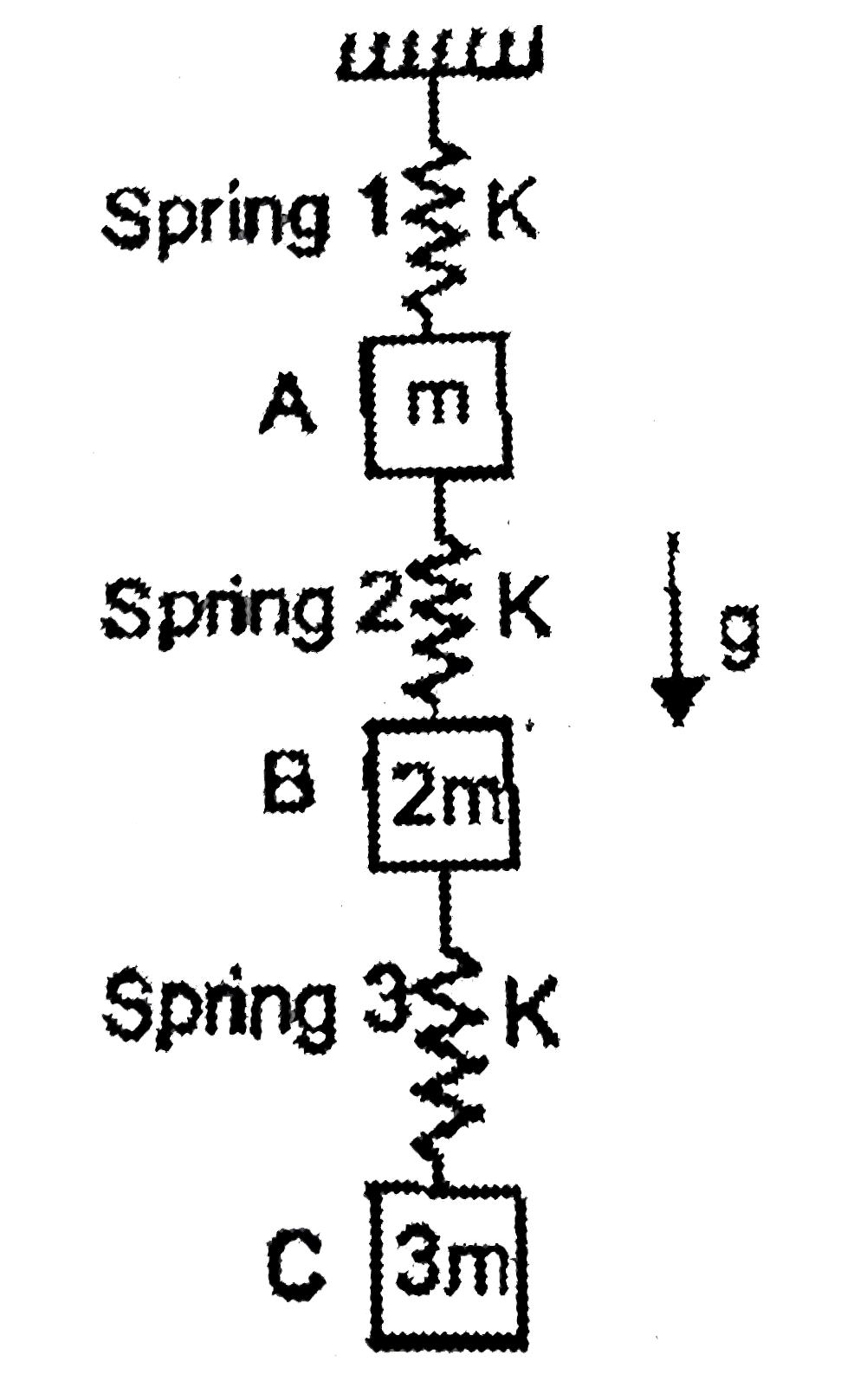A block tied between two identical springs is in equilibrium. If upper spring is cut then the acceleration of the block just after cut is 6m/s2 downwards. Now, if instead of upper spring, lower spring is being cut then the acceleration of the block just after the cut will be.

4m/s2 downwards
6m/s2 downwards
4m/s2 upwards
6m/s2 upwards
The correct Answer is:A
F1+F2=mg ...(i)
If upper spring is cut
a=mg−F1m=6⇒F1=4m
If lower spring is cut ∴F2=6m
a=mg−F2m=10m−6mm=4
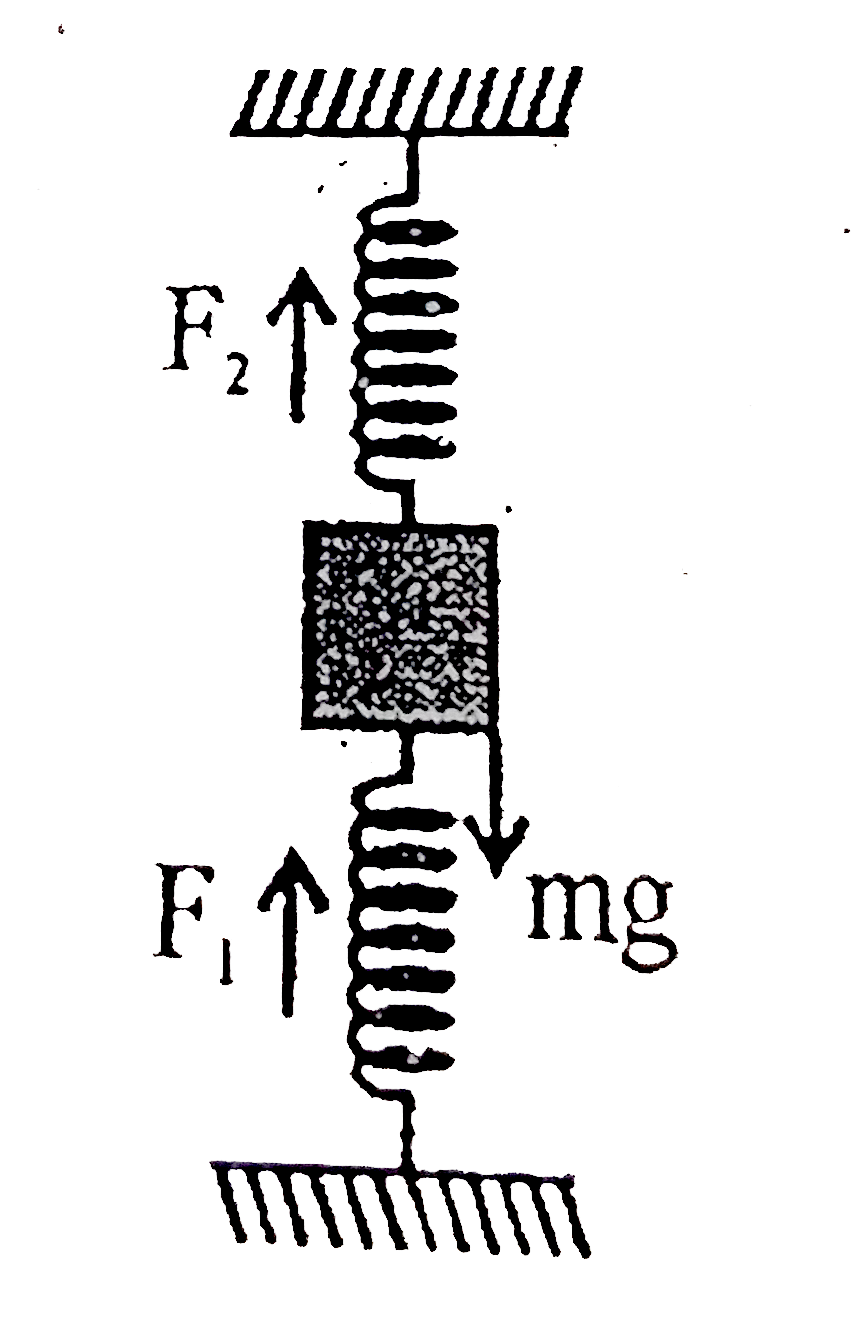
Topper's Solved these Questions
- TEST PAPERSBook:ALLENChapter:TEST PAPERSExercise:PAPER 2
Explore 60 Videos
- TEST PAPERSBook:ALLENChapter:TEST PAPERSExercise:PAPER 3
Explore 100 Videos
- TEST PAPER 4Book:ALLENChapter:TEST PAPER 4Exercise:PHYSICS
Explore 45 Videos
- UNIT & DIMENSIONS, BASIC MATHS AND VECTOR Book:ALLENChapter:UNIT & DIMENSIONS, BASIC MATHS AND VECTOR Exercise:Exercise (J-A)
Explore 7 Videos
Similar Questions
Knowledge Check
A block tied between identical springs is in equilirium. If upper spring is cut, then the acceleration of the nlock just after cut is 5ms1 Now if instead of upper string lower spring is cut, then the acceleration of the block just after the cut will be (Take g=10m/s2).
A1.25ms−2B5ms−2C10ms−2D2.5ms−2A block is attached with an ideal spring and string, and is in equilibrkum as shown in Figure. The acceleration of the block just after breaking the string is a1 and just after breaking the spring is a2. Then
 Aa1=5g8Ba2−3g5Ca1=g2Da2=g
Aa1=5g8Ba2−3g5Ca1=g2Da2=gConsider a system of two massless idealsprings and a block which is in equilibrium. The acceleration of block just after cutting the right spring is (Take g=10m/s2 ):
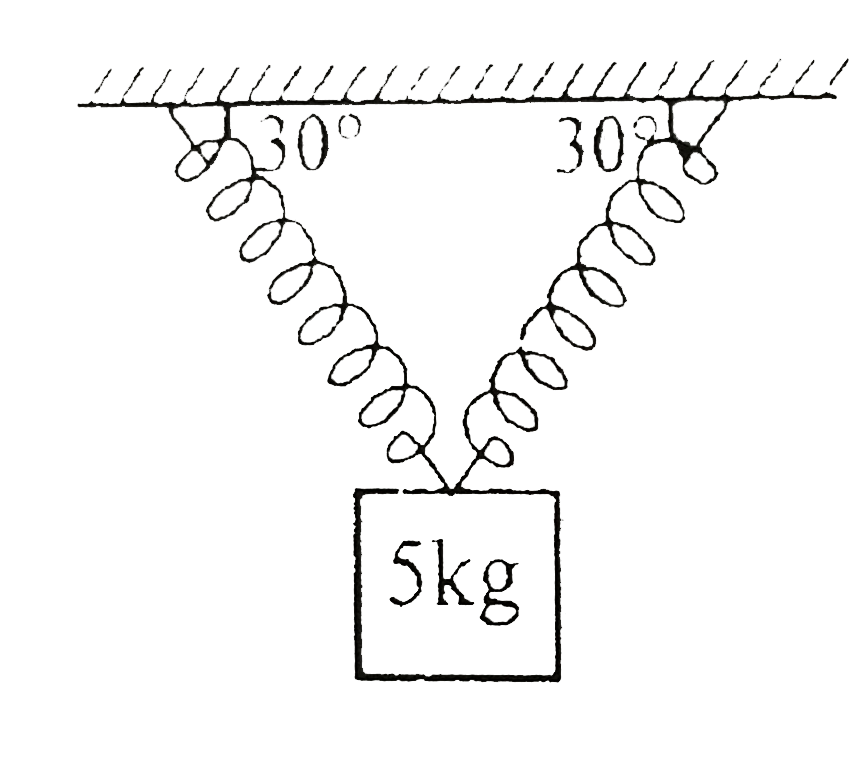 A5m/s2B10m/s2C10√2m/s2D20m/s2
A5m/s2B10m/s2C10√2m/s2D20m/s2
Two blocks A and B of same mass m attached with a light string are suspended by a spring as shown in fig. Find the acceleration of block A and B just after the string is cut.
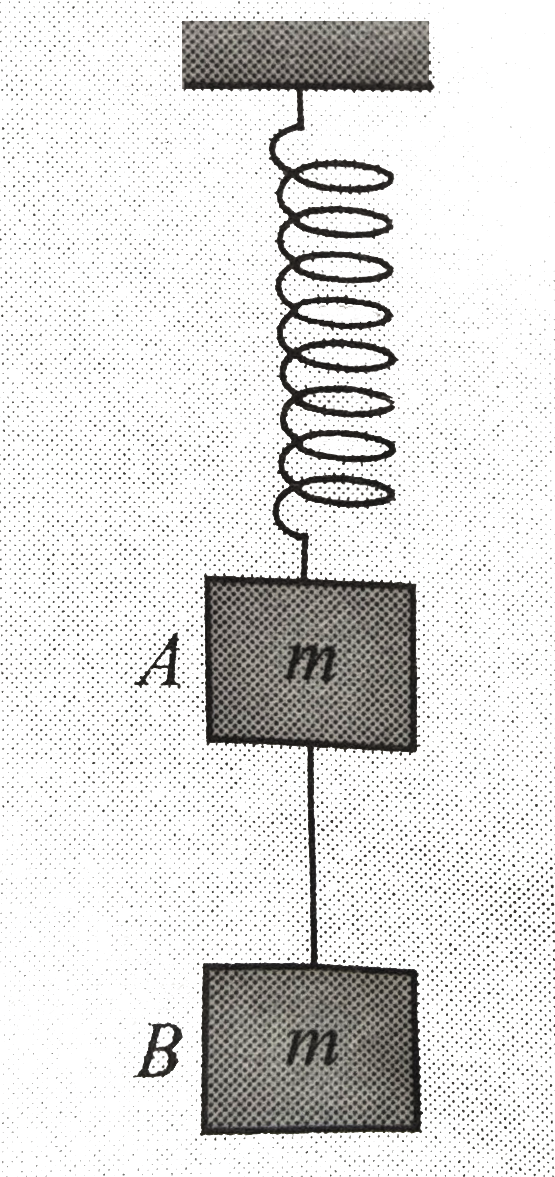
View SolutionTwo blocks A and B of same mass m attached with a light spring are suspended by a string as shown in fig. Find the acceleration of block A and B just after the string is cut.
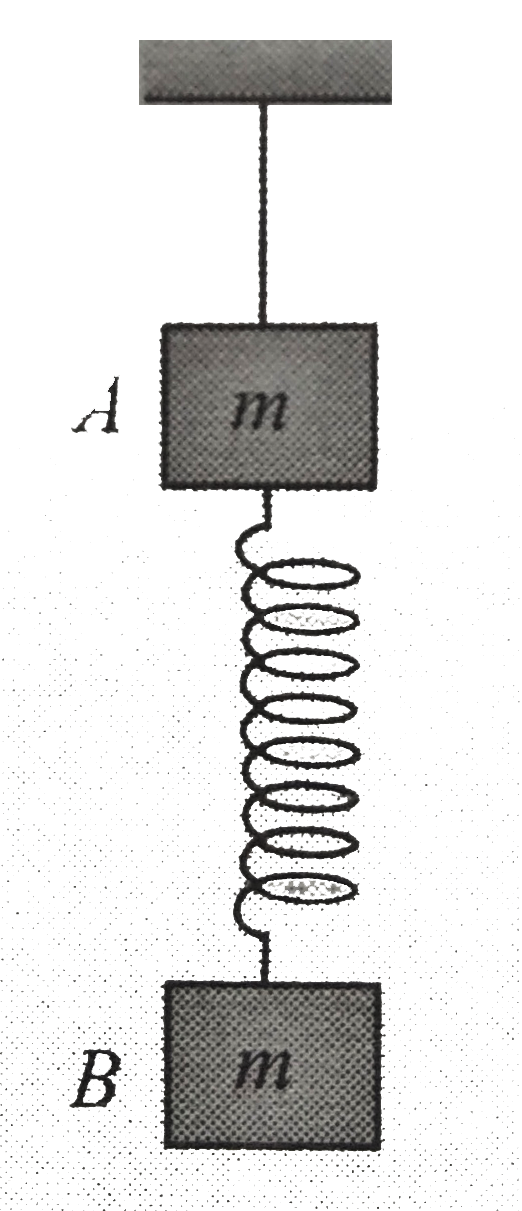
View SolutionTwo blocks A and B of masses m and 2m, respectively , are held at rest such that the spring is in natural length. Find out the acceleration of both the blocks just after relese.
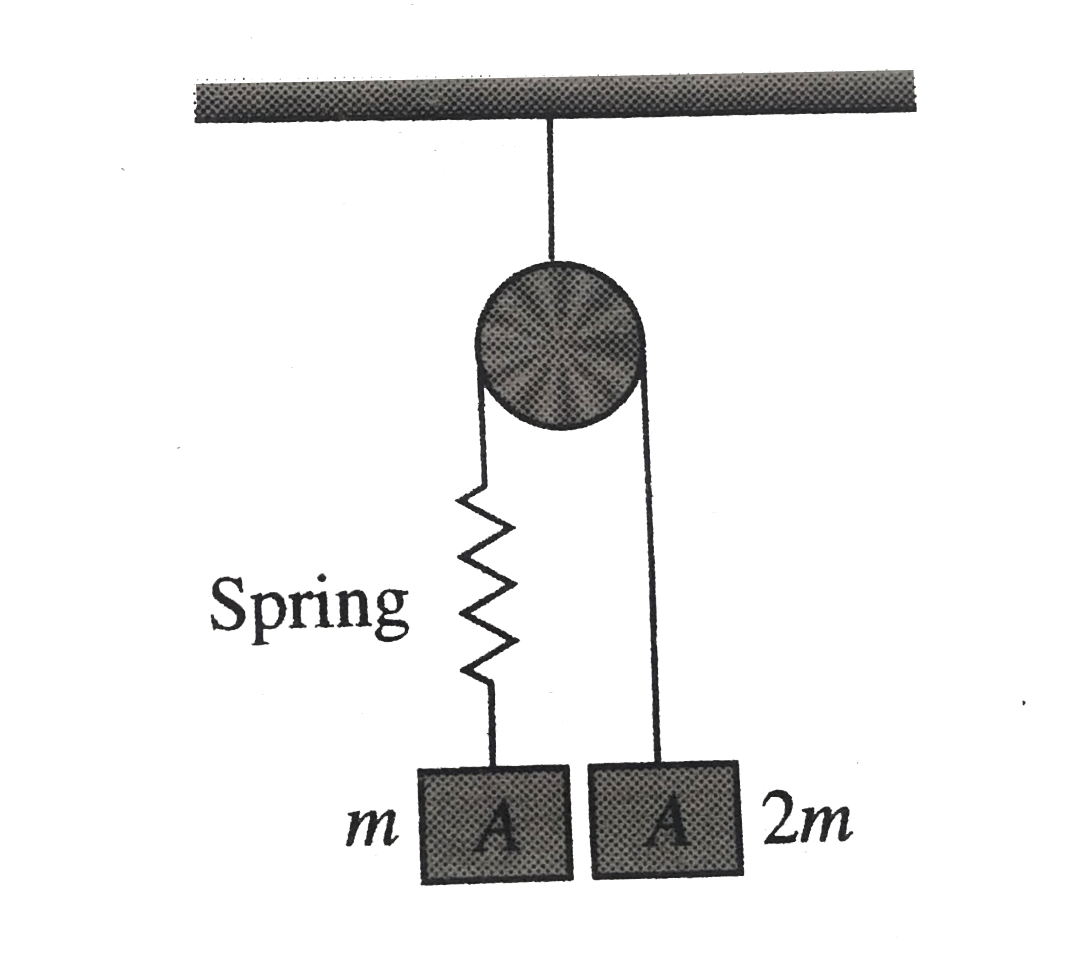
View SolutionTwo block of mass 2kg are connected by a massless ideal spring of spring constant K=10N/m . The upper block is suspended from roof by a light string A . The system shown is in equilibrium. The string A is now cut, the acceleration of upper block just after the string A is cut will be (g=10m/s2 .

View SolutionSystem shown in fig is in equilibrium and at rest. The spring and string are massless now the string is cut. The acceleration of mass 2m and m just after the string is cut will be:
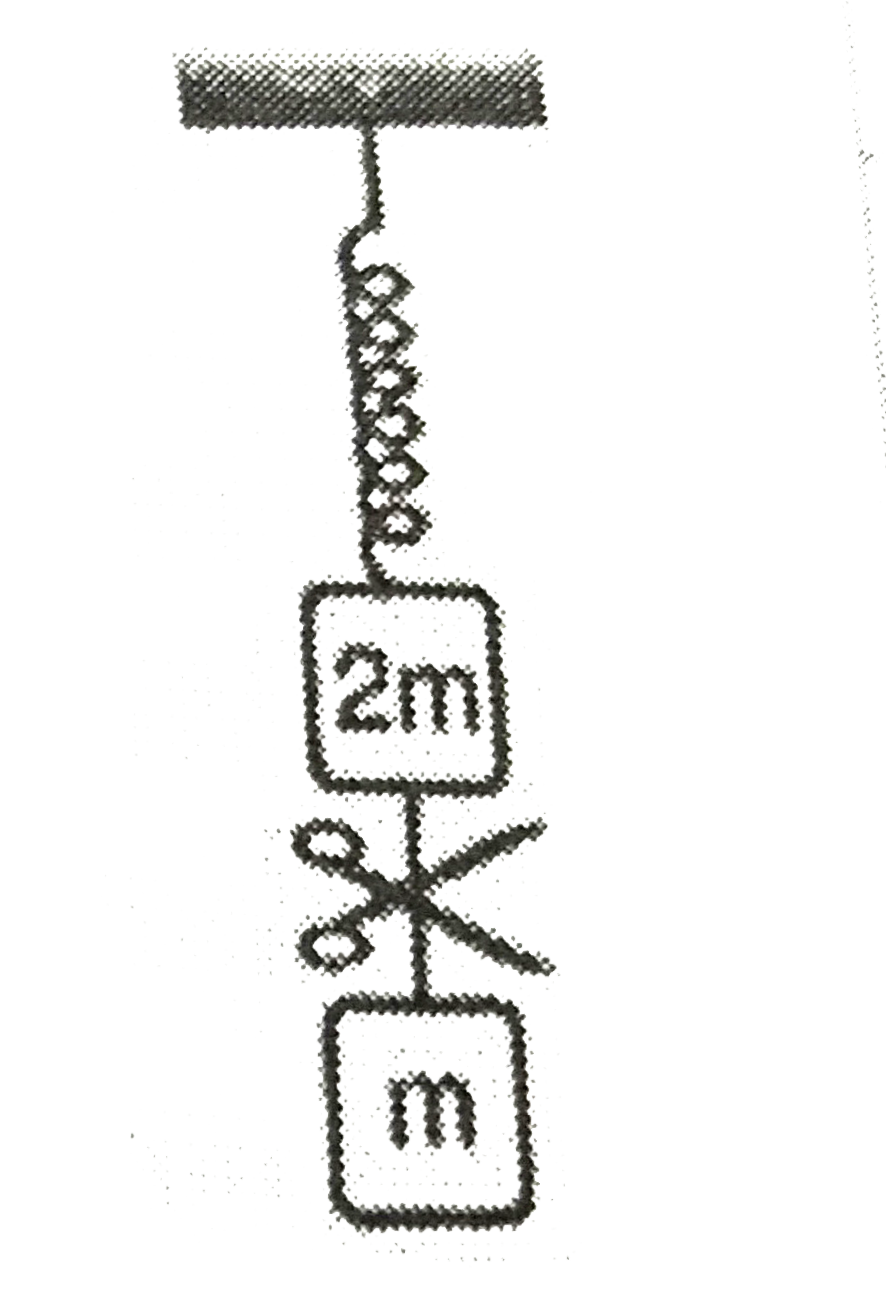
View Solution



